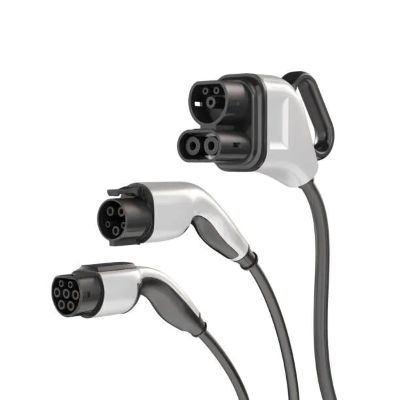


Understanding EV Charging Levels: A Complete Guide
Introduction
As a Leading EV Charger Manufacturer in China, LiCB Charge Offers Reliable AC and DC Electric Vehicle Charging Stations Alongside Comprehensive Charging Solutions.
As electric vehicles (EVs) become increasingly popular, understanding the different charging levels available is crucial for optimizing your EV experience. Choosing the right charging level ensures your vehicle stays powered efficiently and suits your personal lifestyle. This guide breaks down the main EV charging levels, their benefits, and how to select the best option for your needs.
EV charging is divided into three primary levels, each differing in charging speed, power requirements, and typical use cases.
Level 1 Charging
Level 1 is the most basic form of charging, using a standard 120-volt AC household outlet — like those found in most homes. It’s ideal for drivers with short daily commutes or those who can charge overnight without urgency. Charging speeds are slow, typically adding about 2 to 5 miles of range per hour.
| Level | Connector Type | Output Power | Charge Time | Range Added per Hour | Applications |
|---|---|---|---|---|---|
| 1 | J1772 & Tesla | 1kW–1.8 kW | 22–40 hours | 3 to 5 miles | Home, supplemental charging |
Level 2 Charging
Level 2 charging uses a 240-volt AC outlet — similar to what powers large household appliances like dryers. This significantly speeds up charging, providing 10 to 60 miles of range per hour, depending on vehicle and charger specs. Level 2 chargers are common at homes, workplaces, and public stations.
| Level | Connector Type | Output Power | Charge Time | Range Added per Hour | Applications |
|---|---|---|---|---|---|
| 2 | J1772 & Tesla | 3.3kW–22kW | 2–13 hours | 12 to 80 miles | Home, workplace, public |
Level 3 Charging (DC Fast Charging)
Level 3, or DC fast charging, is the fastest option, supplying direct current (DC) directly to the battery through specialized stations. It can add 60 to 100 miles of range in about 20 minutes, making it ideal for long-distance travel or quick top-ups. These chargers are typically located along highways and urban centers.
| Level | Connector Type | Output Power | Charge Time | Range Added per Minute | Applications |
|---|---|---|---|---|---|
| 3 | CCS (Combined Charging System), CHAdeMO, Tesla | 50kW–350kW | 15–90 minutes | 3 to 20 miles | Public, fast charging |
Selecting the best charging level depends on multiple factors:
1. Vehicle Compatibility
Not all EVs support every charging level. Most modern EVs work well with Level 2 chargers, while Level 3 fast charging may be limited to specific models. Always check your vehicle’s specifications to avoid compatibility issues.
2. Charging Infrastructure Availability
Consider the charging stations available near you. If DC fast chargers (Level 3) are scarce, Level 2 chargers may be the practical choice. For predictable daily use, Level 1 may suffice if overnight charging is feasible.
3. Charging Speed and Convenience
Level 1 suits those who don’t need quick charges. Level 2 offers a good balance of speed and convenience for everyday use. Level 3 is best for quick recharges during long trips or busy schedules.
4. Cost Considerations
Level 1 charging is the least expensive, requiring no extra equipment. Level 2 involves purchasing a charger and possible installation costs. Level 3 chargers are costly and usually installed in commercial or public locations.
5. Plug Type Compatibility
Make sure your charger’s plug type matches your EV’s inlet. Level 1 and 2 typically use the J1772 connector (or Tesla’s variant). Level 3 fast chargers may use CCS, CHAdeMO, or Tesla’s proprietary NACS connector.
Level 1 & 2: Most EVs use the J1772 connector, compatible across residential and public stations.
Fast Charging (Level 3): Uses CCS (Combined Charging System) or CHAdeMO connectors, with CCS becoming the industry standard.
Tesla: Uses its own NACS connector but adapters are available to charge across different systems.
The industry is moving towards unifying connectors for convenience, but some variation remains.
Choosing the right EV charging level depends on your vehicle’s capabilities, local charging options, speed needs, budget, and plug compatibility. Level 1 offers a simple, low-cost option for casual charging. Level 2 provides faster home and public charging, suitable for most drivers. Level 3 fast charging is best for rapid energy boosts during travel. By understanding these factors, you can ensure your EV is charged efficiently, reliably, and in a way that best fits your lifestyle.Know more about Google SEO Directory
